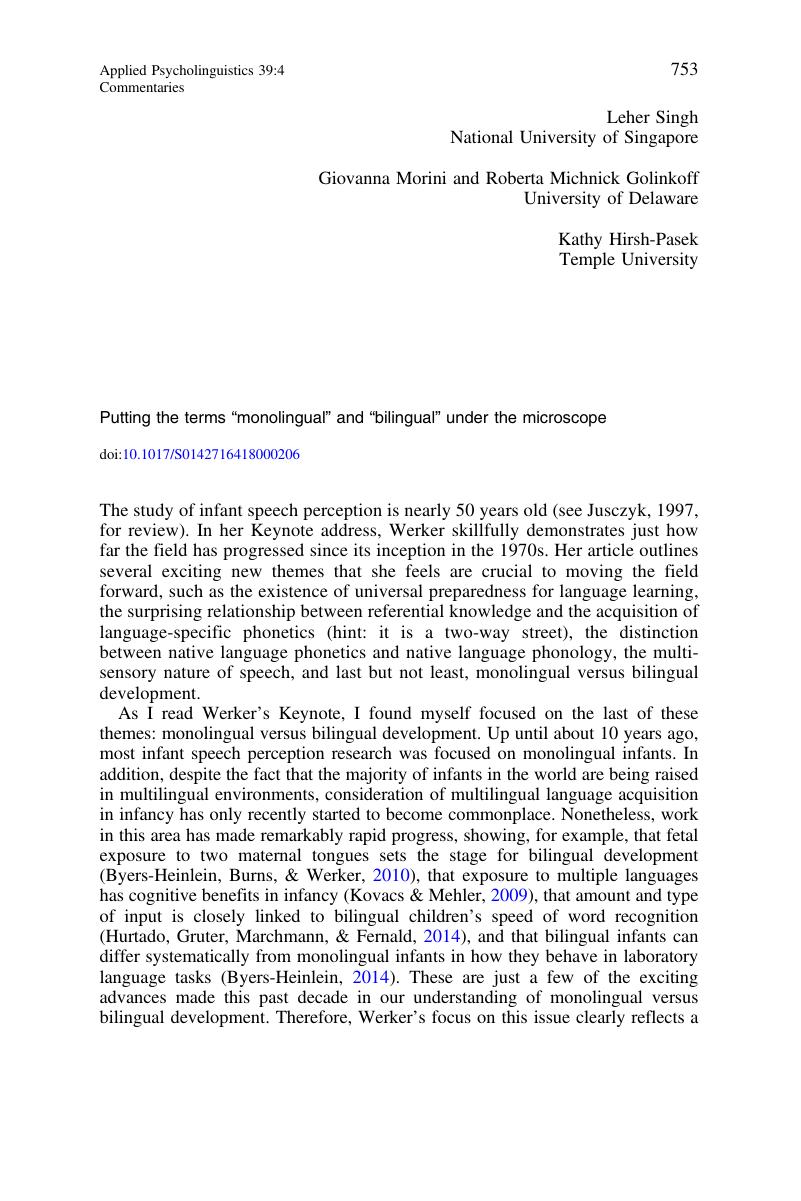Crossref Citations
This article has been cited by the following publications. This list is generated based on data provided by Crossref.
Johnson, Elizabeth K.
van Heugten, Marieke
and
Buckler, Helen
2022.
Navigating Accent Variation: A Developmental Perspective.
Annual Review of Linguistics,
Vol. 8,
Issue. 1,
p.
365.
van der Feest, Suzanne V.H.
Rose, Maya C.
and
Johnson, Elizabeth K.
2022.
Showing strength through flexibility: Multi-accent toddlers recognize words quickly and efficiently.
Brain and Language,
Vol. 227,
Issue. ,
p.
105083.
SIM, Jasper Hong
and
POST, Brechtje
2023.
Influence of caregiver input and language experience on the production of coda laterals by English–Malay bilingual preschoolers in multi-accent Singapore.
Journal of Child Language,
p.
1.





